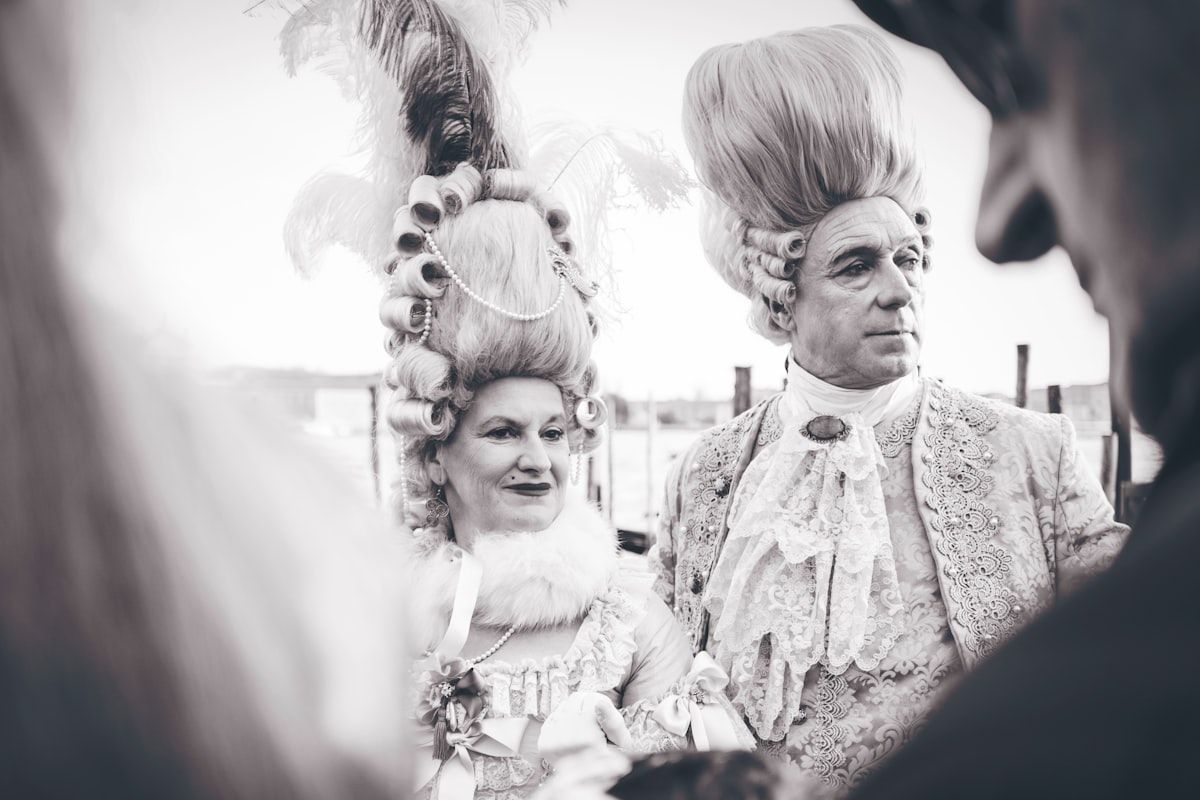Castrato Singers Today: Their History and Modern Equivalent

Castrato singers, known as 'The Castrati', make up a unique time in musical history. They were known for their incredible voices and unusual lives, which has peaked the curiosity of many musicians and historians. This article will explore castrato singers in today's society.
There are no castrato singers today, given that the last known castrato singer, Alessandro Moreschi, died in 1922 and castrating boys for this purpose was made illegal in 1861. However, there are singers today that possess similar voice qualities due to hormonal conditions that prevent puberty.
I will explain more about castrato singers below, including their history, fame and how exactly they came to an end. I have also explored the unique effects of the castration process on these boys into adulthood and provided one of the only recordings ever made of a castrato's voice.
Castrato Singers Today
In order to understand why there are no traditional castrato singers today, it is important to understand the history and meaning of the word. After this, you will find some modern-day equivalents to these singers.
The Meaning of 'Castrato'
Castration has been used for thousands of years, dating back to biblical history with the Eunuchs. Castrato, castrate and eunuch are all words that describe men that have been castrated.
The Italian word 'Castrato' literally means 'castrated'. However, the term 'Castrato' was given specifically to Italian singers who had been castrated before puberty to retain their boy-like vocal range.
The Purpose of Castrato Singers
Castrato singers were used to replace female vocalists in the 16th century, following a ban on female singers on stage in 1588. Females had previously not been allowed to sing in churches, but Pope Sixtus V extended this ban in 1588, to involve singing on any stage. This was done in an effort to protect the morality of women.
Boys were the only singers that could match the female vocal range, and were therefore often used in church choirs for higher vocal lines. Following the extended ban, theatres began using boys to fill female roles as well. However, boys would only keep their high voices until puberty, when their voices would drop significantly.
As a result, boys began being castrated before puberty so that they could continue to sing on stage in these roles. The church even started employing castrati in their choirs in 1589, replacing young boys and men that could sustain a strong falsetto.
Castrato singers (known as Castrati) offered a unique style of singing. Although their vocal range was similar to the female voice, they had an unnatural power and control over their voice. This unique singing style led to their rise in popularity in the 17th century opera.
This can be attributed to the physical changes that went with early castration, which I will explain further down.
When Did they Stop Castrating Singers?
Castration for the purpose of a singing career (to emasculate or evirate someone) was officially made illegal in Italy in 1861. This was under the unification of Italy, where Italy adopted the laws of the Kingdom of Sardinia. These laws were governed by King Victor Emmanuel II.
However, the practice did not truely die out until around 1878 when the Catholic Church banned the recruitment of castrati in their choirs. Current castrati members were then banned from 1902.
This is because castration for this purpose was usually done in secret anyway. Poor families would castrate their young sons in the hope that they would become famous. Alternatively, castrati that did not make fame would at least be able to join the church choir, which offered them food, shelter and a free education to support their families.
This is why the last known castrato, Alessandro Moreschi, wasn't castrated until 1865, when he was 7 years old. Although it was illegal at the time, he was still castrated and recruited into the Sistine Chapel Choir.
Once the Church declared that castrati could no longer be recruited into the choirs in 1878, there was no financial incentive for families to castrate boys. The Church then banned current castrati members from 1902 onwards.
Who Was the Last Castrato Singer?
The last known castrato, as I mentioned earlier, was Alessandro Moreschi. Moreschi was born in November 1858 and died in April 1922, at the age of 63.
Castration
Moreschi was supposedly castrated at 7 years old due to an inguinal hernia. This was a common excuse for the castration of boys. Another common excuse was being bitten by an animal.
As a sonographer, I can say that I have scanned and diagnosed many inguinal hernias. This pathology is almost always seen in middle-aged unfit men or the elderly. It is rare for a child to have an inguinal hernia, which does raise the suspicion that Moreschi was castrated solely to preserve his pre-pubescent voice.
Career as a Castrato
Regardless of why, Moreschi's castration secured his career with the Catholic Church as a castrato singer. He was scouted out at 12 years old to join the church's Roman choirs, eventually joining the Sistine Chapel Choir.
Moreschi was involved in the Sistine Chapel Choir until the Catholic Church banned their castrati members. It was at this point that he chose to retire. However, before his retirement, he was able to make a few recordings. These are the only recordings ever made of a castrato singer.
As you can tell, this voice is a lot higher than the average male voice. The recording is not of the best quality due to the recording technology of the day (gramophone) and the age of Moreschi at the time. He was well past his prime in the recording, but was previously known as 'The Angel of Rome'.
Are There Modern Day Castrato?
Although castration is illegal, it is still performed for other reasons. These reasons include surgical castration due to a medical emergency or chemical castration as punishment for sex offenders.
Castration Occurs Mostly in Adults
The above methods of castration most often occur in men who have already experienced puberty. They therefore do not experience the same changes as a castrato did.
Modern Hormone Replacement
Modern medicine has also given us the ability to supplement the testosterone that is normally produced in the testicles. This allows boys who lose their testicles to continue into puberty as they would have if they had not been castrated.
Natural Castrato
The 'natural castrato' is a singer who has a hormonal condition that prevents puberty. In many cases, they still have two healthy testicles.
For example, those with Kallmann syndrome lack a number of nerves in the brain that coordinate the release of testosterone from the testicles. As a result, these children do not go through puberty, or do not complete puberty.
However, these syndromes often come with other effects to the body. Therefore, those with a natural castrato voice do not have the unnaturally long limbs and barrel chests observed in the original castrato singers.
Therefore, natural castrati often lack the vocal strength and lung capacity of the original castrati. In saying that, their vocal range is still impressive and can be used to sing the vocal lines of the original castrati. Below is a perfect example of this.
There are also men with vocal cord anomalies that allow them to sing unusually high, such as Amirhossein Molaei. After years of training, Molaei was able to sing up to F#8 for the Guinness World Records.
Effects of Castration
Smaller Vocal Chords
Castrato singers retained their child-like voices because their vocal cords did not undergo the changes of puberty. During puberty, a boy's larynx grows larger and thicker. Below are the effects on a castrato's voice when the vocal cords do not enlarge or thicken.
- Higher vocal range, similar to that of a female.
- Agile voice (can sing through notes smoothly and quickly)
The most famous castrato singer in history was arguably Farinelli, whose real name was Carlo Maria Michelangelo Nicola Broschi. Farinelli could sing from A3 to D6 (the A below middle C to D, two octaves above middle C).
This is an incredible example of how a male's natural vocal range was shaped into that of the female vocal range through castration and training.
Long Bones and Barrel Chests
The Castrati were known for their barrel chests and long limbs. This is because of their unusually long bones, including their ribs, arms and legs. You can read about all the effects of castration on the remains of castrato Gaspare Pacchiarotti here.
Because testosterone plays a large role in closing the growth plates on all long bones in the body, a castrato's bones would continue to grow for many years after becoming an adult.
This increased chest size gave the Castrati an unnatural lung capacity and vocal strength. Because they could fit more air in their lungs, they were able to hold notes for longer than humanly possible and singer louder. This extra volume made up for their otherwise underdeveloped vocal cords.
Overall, their other-worldly appearance gave them the perfect mix of a female's voice and a large male's vocal strength and volume.
